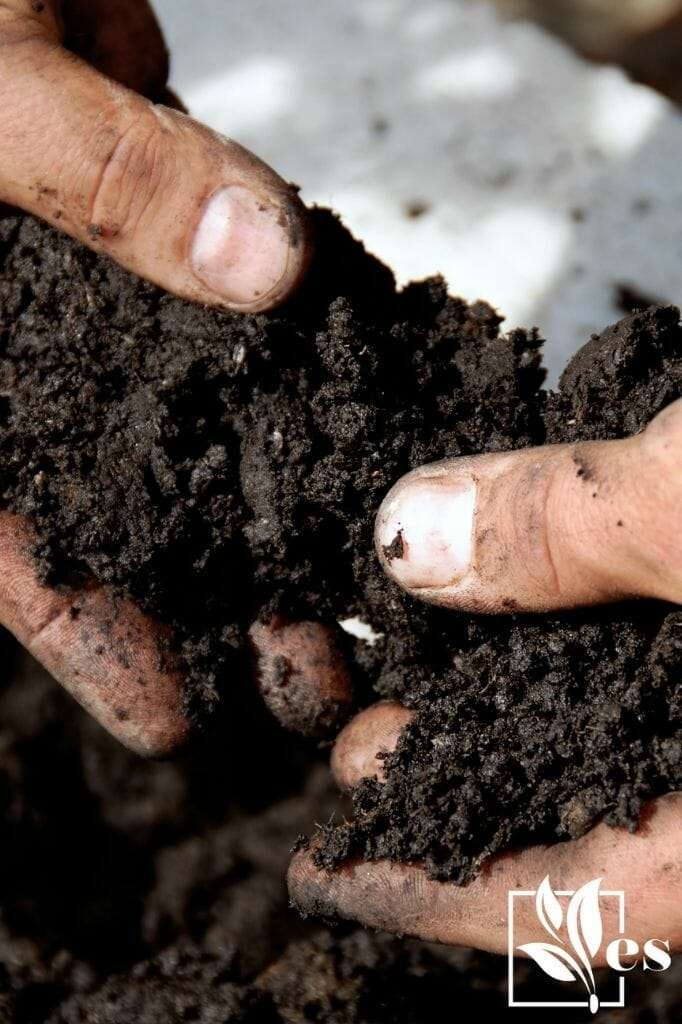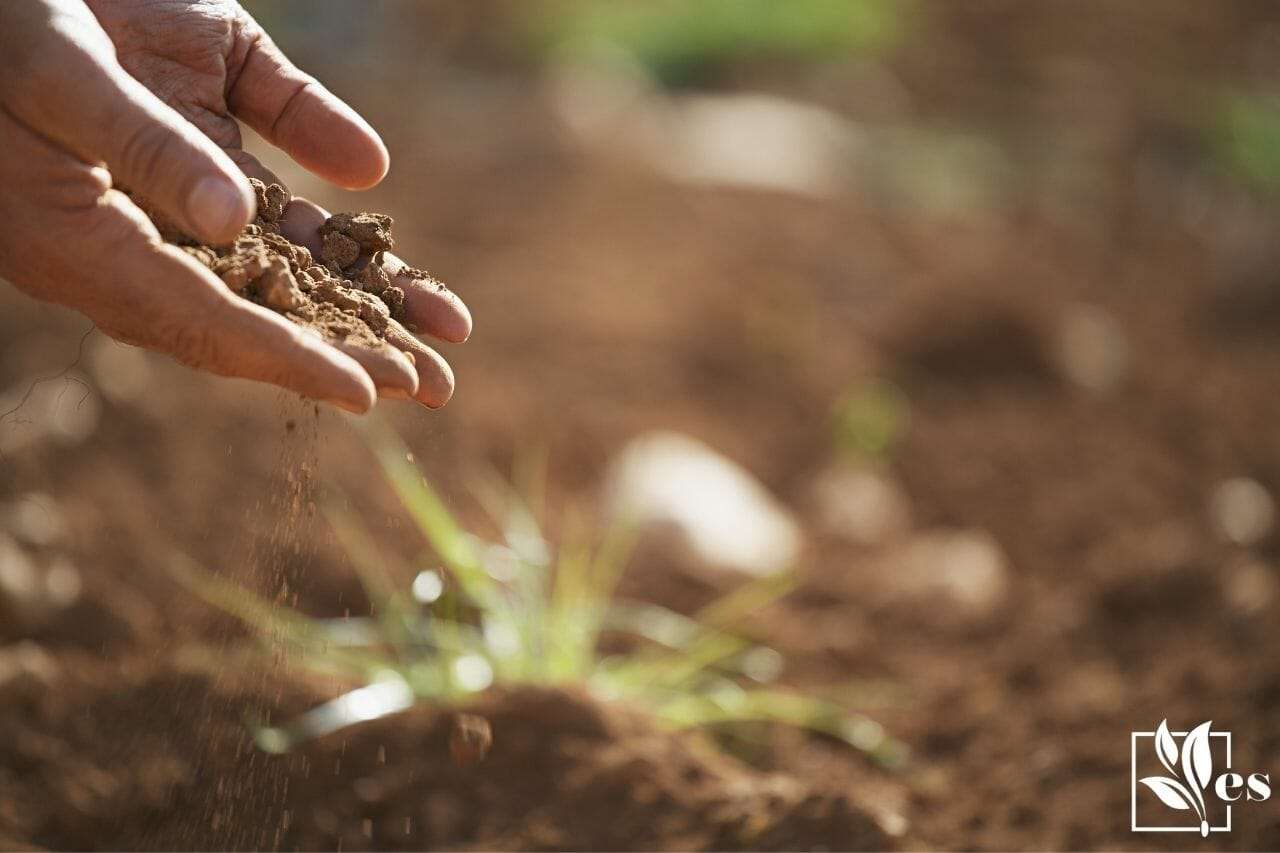 How to lower soil pH in potted plants is very important for plant parents to have adequate knowledge about.
How to lower soil pH in potted plants is very important for plant parents to have adequate knowledge about.
This is because many important household plants need acidified soil with low pH to grow healthily and bloom on time.
Our experts are here to help you with just that. In this article, we bring you a comprehensive guide on how to go about this process in the easiest and most effective manner.
JUMP TO TOPIC
How To Lower Soil pH in Potted Plants?
💥 In order to lower soil pH in plants that are potted, you can use quick-acting substances like elemental sulfur and sulfur in other forms of acidic fertilizers. Alternatively, you can go for more organic options such as compost, compost tea, or pine mulch to lower the pH of otherwise alkaline soil. Your coffee might also come in handy to correct pH to a lower level.
Find out these and more in the sections that are coming up ahead.
– Add Sulfur to the Soil
Adding elemental sulfur is the best way to lower the pH of the soil in a controlled and professional manner. It is an essential nutrient that not only lowers the pH levels of the soil but is also important for the growth of plants. Another advantage is that it stays in the soil for a long time.
The thing about elemental sulfur is that it is slow working and needs a bit of time before it can start producing an effect. That is why you need to add it to the soil in the summer or fall before the spring. Keep checking the pH of the soil 4 to 6 months after adding sulfur and then add more if needed.
You can buy well-reviewed elemental sulfur from any good manufacturer. Follow the instructions given on the label. Adding 0.1 pounds of elemental sulfur to 10 square feet of soil usually increases acidity levels by 0.5 pH.
– Add Iron Sulfate
Iron sulfate comes in second to elemental sulfur in providing an instant fix to the soil. You can procure it easily from your local supermarket or source it online. It is not that hard to come across.
It is very important that you give the instructions given very thoroughly. This will give you an educated measure of how much of this material to use in your soil type.
As a potentially harsh chemical, if applied carelessly it can end up damaging your plant. Always water the soil before using this sulfate because this water then acts as a buffer against any potential chemical damage. You can use tap water after purifying it for better results.
– Mix Compost With Soil
Compost is not only a must for providing your plants with some much-needed nutrition, it is also a pretty organic method to raise the soil pH a few notches up. Composting must be a regular part of your plant care regime, most notably for the plants that need a low soil pH to grow.
In order to make a compost that performs this task most efficiently, make sure to continuously churn it within the pile to aerate it during its composting process. Add more “browns” such as wood ashes to the pile compared to the greens.
This will neutralize the high pH of some of the green within it. Allow your compost to decompose well over time.
You can then use this compost every growing season and both mix it within the soil and also cover the soil with it. As it breaks down over time, your soil gradually becomes acidic.
The best thing about using compost is that it is one of the safest methods and most beneficial for the growth of acidic growing plants.
– Make Compost Tea
An alternative approach to using compost for lowering the pH of the soil in which plants are potted is to use it in liquid tea form. This is an even faster method of adding acidity and nutrients than solid compost.
In order to make compost tea, take a five-gallon bucket of water and fill it completely with water. It is best to leave it as it is for over 24 hours without covering it.
This would lead to the evaporation of chlorine from the water, which is otherwise harmful to the plants. Now add 5 to 10 cups of a compost to this water and allow it to dissolve for over two days at least.
After two days, strain the compost tea and pour it into a spray bottle. You now have in your hands a foliar spray that you can use to water and spray the plants regularly. It works slowly, though, that is why you must keep performing a pH test until the desired level is reached. The strained solids can then be used as a fertilizer for its organic matter.
– Add Leaf Mold With the Soil
This method is even easier than using compost. Leaf mold from oak trees is the best and you can easily collect these leaves in large numbers each fall.
The next thing you need to do is to take a composting bin and pile up these leaves inside it. Pour water in the bin to wet them and then leave them there to compost over a period of at least two years. Keep adding more leaves to the pile as you find them.
Soon enough, this pile will be teeming with bacteria, fungi, and worms of all sorts until it converts into a soft-to-touch, brown-colored, and rich in nutrients organic matter. Cover your soil with this leaf mold to naturally lower its ph level.
– Add Sphagnum Peat Moss
Peat moss is a natural compost formed from sphagnum peat plants in the acidic environments of a peat bog over a period of thousands of years. It is not only a great soil amendment for lowering soil pH but also an effective organic fertilizer providing some much-needed nutrients to the plants.
For acidifying the soil, it is better added to the soil before potting the plants. Add four to six inches of this moss on the topsoil and then use a rake to till it about six inches deep. This will continue to decrease your soil’s pH for over two years at least.
As effective as moss is in lowering the soil pH, it is also a finite resource. In fact, many studies are now revealing that the loss of peat from peat bogs is contributing negatively to their diverse biodiversity. That is why it’s best to go for more economically sustainable options instead.
– Start Using Acidic Fertilizer
Garden soil with multiple trees planted within it cannot be acidified with soil amendments. This is because not all plants like to grow in acidic soil.
That is where an easy fix option like an acidic fertilizer comes in. Simply pour it into the soil around the low pH-loving plants according to the needs of the plant. It will raise pH levels instantly but for a short time only.
Any fertilizer that contains ammonium nitrate, sulfur-coated urea, or ammonium sulfate as its chief ingredient is best for making your potted soil acidic. Out of these three, ammonium sulfate needs to be used carefully as it has been known to cause fertilizer burn. The other two options are relatively safer.
– Use Leftover Coffee
There are three ways that coffee is mostly used in horticulture. Used coffee grounds are not good at decreasing the pH of the soil as its own pH is about 6.5.
Fresh ground coffee, however, does increase the acidity of the soil. You can also use leftover coffee by diluting it with water in a ratio of 50:50. Then pour it over your soil every week and keep checking the pH with a pH meter.
Coffee is great at decreasing soil’s pH for a short while only. Keep in mind that it is not a long-term or permanent solution. You will need to keep adding it if this is your method of choice. Also, if you have a gnat problem coffee will help a lot.
– Mix Pine Needle Mulch With the Soil
If you are someone who prefers organic over-processed and finds yourself asking “how to lower pH in soil naturally?”, then a pine needle mulch is another great ingredient for you. Both pine needles and pine leaves increase soil acidity as they break up over time.
Collect the needles and the leaves that have fallen down from pine needles. Cover your soil with these as a layer of mulch. Better still, use a rake and mix these in with the soil within the top 2 to 4 inches. This will make sure that acidity reaches deep within the soil.
These are satisfactory ingredients when it comes to naturally lowering the pH by small amounts. If you need a more drastic drop in pH, then a commercial option might be more viable for you.
– Add Aluminum Sulfate
Aluminum sulfate is right up there with elemental sulfur when it comes to lowering the pH level of the soil fast enough. It comes in a powdered form and you can buy one from any reputed manufacturer with good reviews.

Follow the instructions on the label to see how much should be added to each pot. Pour the powder over the soil and then gently work it within the potting mix, taking care not to damage the roots of the potted plant.
Pour water on it to moisten the soil and activate the chemicals. Aluminum is released first while sulfur continues to raise pH slowly over a long period, depending on the temperature and bacteria.












